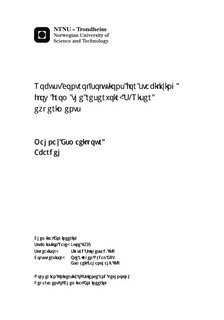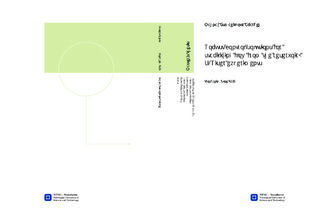| dc.contributor.advisor | Skogestad, Sigurd | nb_NO |
| dc.contributor.advisor | Nydal, Ole Jørgen | nb_NO |
| dc.contributor.advisor | Jahanshahi, Esmaeil | nb_NO |
| dc.contributor.author | Esmaeilpour Abardeh, Mahnaz | nb_NO |
| dc.date.accessioned | 2014-12-19T13:24:21Z | |
| dc.date.available | 2014-12-19T13:24:21Z | |
| dc.date.created | 2013-10-05 | nb_NO |
| dc.date.issued | 2013 | nb_NO |
| dc.identifier | 653778 | nb_NO |
| dc.identifier | ntnudaim:9469 | nb_NO |
| dc.identifier.uri | http://hdl.handle.net/11250/248568 | |
| dc.description.abstract | One of the best suggested solutions for prevention of severe-slugging flow conditions at offshore oilfields is the active control of the production choke valve. This thesis is a study of robust control solutions for stabilizing multiphase flow inside the riser systems; through S-riser experiments and OLGA simulations. ?Nonlinearity? as the important characteristic of slugging system poses some challenges for control. Focus of this thesis is on online tuning rules that take into account nonlinearity of the slugging system. The main objective has been to increase the stability of riser systems at higher levels of valve openings with more production rates. Similar research has been done previously, but is repeated in this thesis using new systematic tuning methods. Three different tuning methods have been applied in this thesis. One is Shams?s set-point overshoot method developed by Shamsozzhoha (Shamsuzzoha and Skogestad 2010). The other is IMC- (Internal Model Control) based tuning method with respect to the identified model of the system from closed-loop step test. The last tuning method is simple PI tuning rules with gain scheduling for the whole operating range of the system considering the nonlinearity of the static gain. The two latter methods have been developed very recently by Jahanshahi and Skogestad (Jahanshahi and Skogestad 2013). Two series of experiments have been carried out using a medium-scale two-phase flow S-riser loop. A single loop control scheme with riser-base pressure as the measurement was used. The robustness of different tuning methods was compared by slowly decreasing the set-point of the closed-loop system, which was the inlet pressure, until instability was reached. The choke valve opening was increasing gradually by decreasing the set-point. A control with a robust tuning method can maintain system stability in a large range of conditions. The choke valve was then replaced with a quicker valve after the first set of experiments. The same experiments were repeated and the effect of control valve dynamics was investigated thereafter. The experiments were simulated in OLGA and the same control tests were performed. The OLGA case was constructed based on the first series of tests with valve 1 and the designed controllers with different tuning strategies were applied. Results of the experiments verified those of the simulations. The tuning method with the highest robustness was thus the one which could stabilize the system at the largest choke valve opening (the lowest inlet pressure). The best tuning method, with respect to robustness is the simple PI tuning rules with gain scheduling for the whole operating range of the system. With this method, it was possible to stabilize the experimental riser system up to a choke valve opening of 37 % from an open-loop stability of 16 %. It was also able to stabilize the simulated riser system until a choke valve opening of 75 % from an open-loop stability of 26 %.Top side measurements were in general difficult to use in anti-slug control. Measurement of the topside density using a conductance probe installation was not successful. Therefore, no cascade anti-slug control schemes could be tested. | nb_NO |
| dc.language | eng | nb_NO |
| dc.publisher | Institutt for kjemisk prosessteknologi | nb_NO |
| dc.title | Robust control solutions for stabilizing flow from the reservoir: S-Riser experiments | nb_NO |
| dc.type | Master thesis | nb_NO |
| dc.source.pagenumber | 129 | nb_NO |
| dc.contributor.department | Norges teknisk-naturvitenskapelige universitet, Fakultet for naturvitenskap og teknologi, Institutt for kjemisk prosessteknologi | nb_NO |

